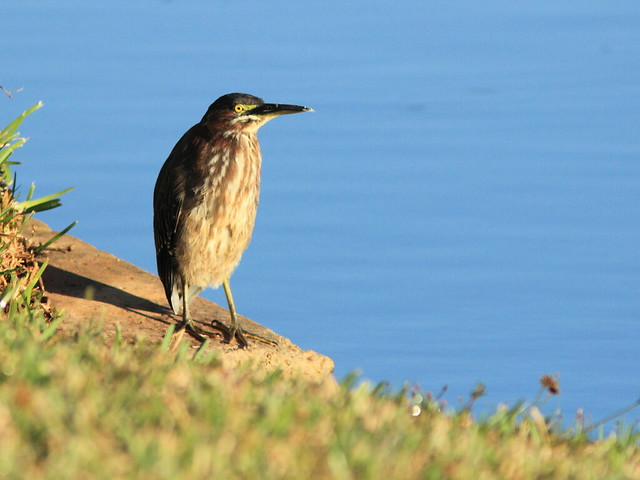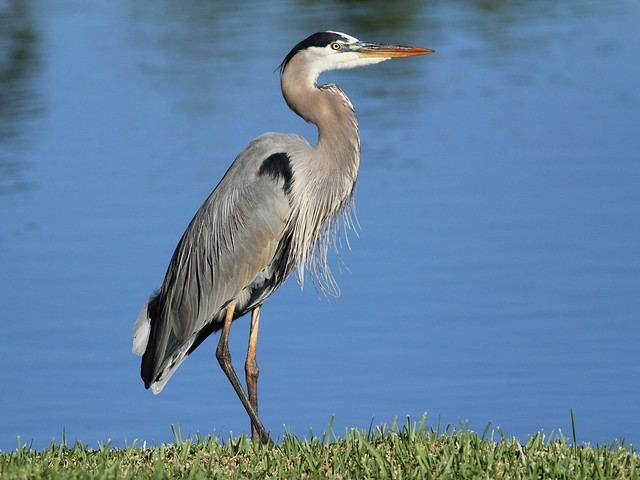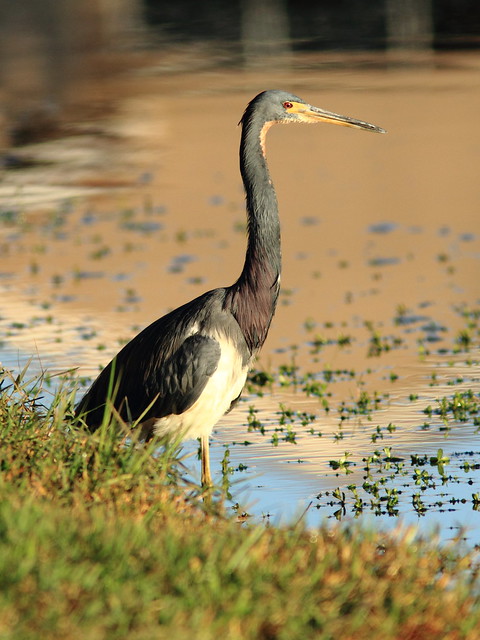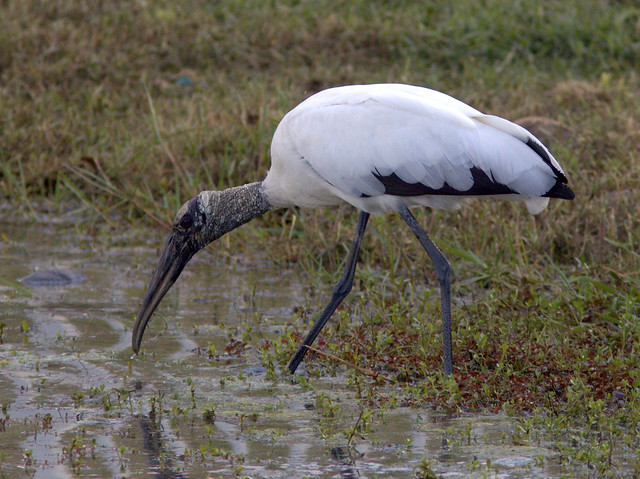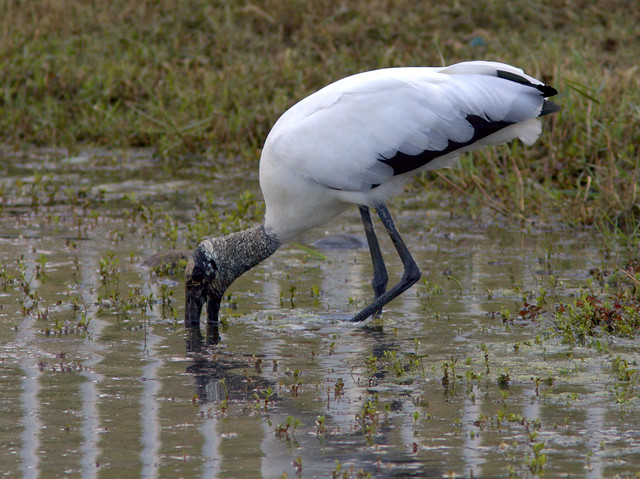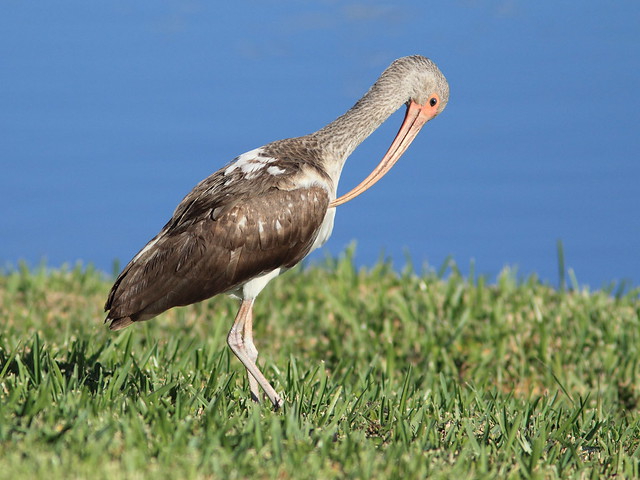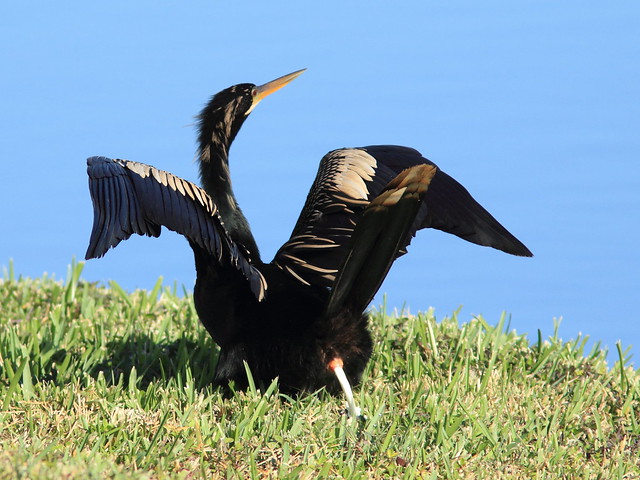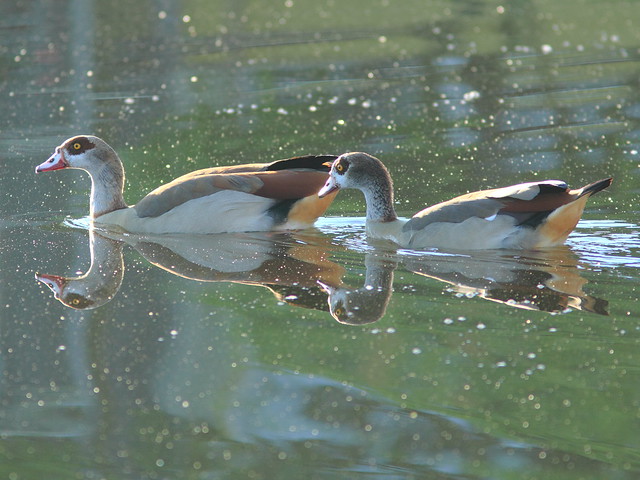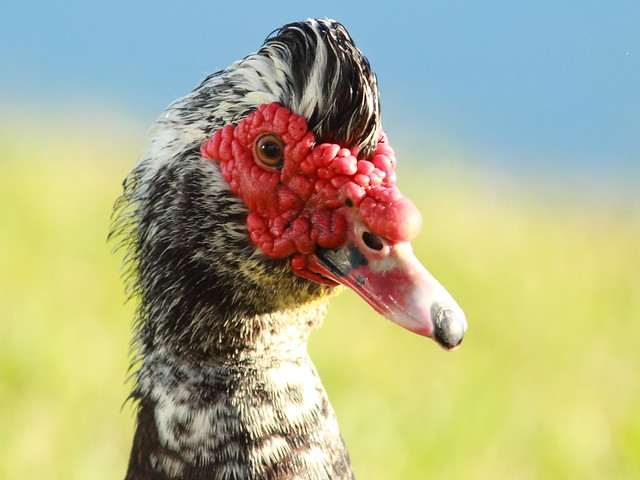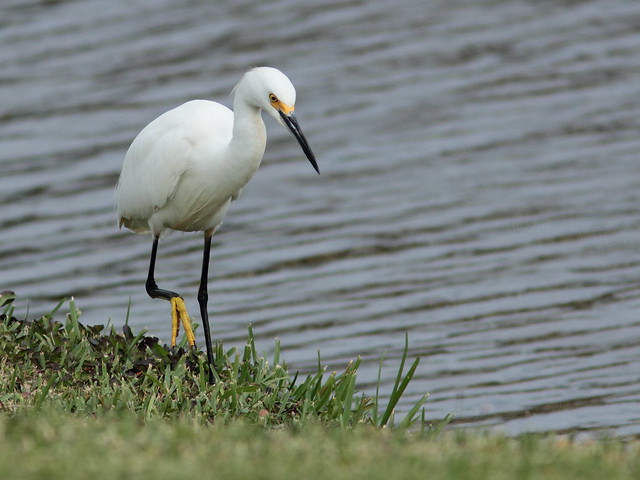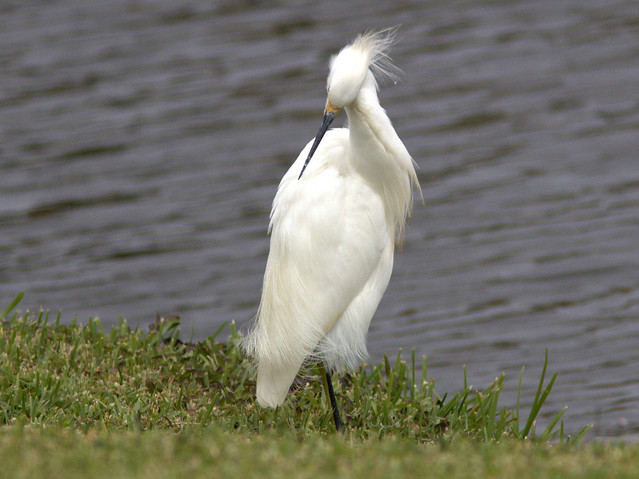Posted by: Ken @ 9:04 pm
This morning’s post is, of necessity, a patchwork of unrelated events. The past two weeks have been full of family fun, mostly unrelated to birding. Among other house guests, our two Illinois granddaughters (six and seven years old) arrived a few days before Christmas and departed New Year’s Eve. The girls slept in the “computer room,” actually our fourth bedroom that rarely serves the architect’s purpose. As a result, my computer face time has been limited to scanning e-mail titles and opening only those that appeared to require immediate action.
The children brought with them a cold virus that thankfully spared me until the morning after after Mary Lou and I sang in the Christmas Eve Choir. As usual it knocked me down and I ended up on antibiotics for sinusitis and bronchitis. My confinement inside the house for a few days gave the girls an added incentive to call me when they saw any big birds visiting our back yard. They did not turn up any rarities, but this does provide a theme of sorts for my past week’s photos.
They spotted this Green Heron, at one end of the size spectrum. With its neck drawn in, and not counting its long bill, it is no larger than a pigeon and weighs even less.
A Great Blue Heron seemed to ignore the kids– they drew nearer as I had to back up in order to fit the whole bird in the frame. It actually assumed a rather relaxed posture.
A Tricolored Heron hurried along the lake margin, changing directions willy-nilly, as if unable to concentrate on any particular route.
Scott, our neighbor and hiking companion, saw how badly I needed a new monopod. My old one could not bear the weight of my camera and long lens when it was extended. He gave me one for Christmas. I tested it on these cooperative subjects. In many cases I can see an improvement in image quality in comparison to hand-held photos.
Wood Storks have been low in number so far this winter, hopefully a sign that they are busy starting families after three unsuccessful breeding seasons. For three of the last four years, they failed to nest in their major rookery at Corkscrew Swamp. Water levels are critical– if too low they do not have alligators under the nests to protect their young from predators; if too high their prey species are too dispersed and they may fly many miles to find food and their young will starve.
The stork is stirring the water with one foot, hoping to frighten small fish into its waiting jaws.
White Ibises have been numerous, evidence of several bountiful years (click on photo for more views).
An immature White Ibis preened lakeside.
This Anhinga was resting on the edge of our lawn and it did not permit me to get very near.
Ready to take off, it lightened its cargo. I have often seen larger birds evacuate before taking flight.
The girls called me to report these Egyptian Geese on our lawn. While I have observed a pair fly over our wetlands on a couple of occasions, these were the first I have ever seen on our property. This introduced species is aggressive towards other water birds and is known to ferociously protect its nest. Its breeding range is spreading northward up the Atlantic coastal states. Not a true goose, it is a member of the shelduck family, a group that is in some ways intermediate between ducks and geese.
Muscovy Ducks have colonized most of the lakes in southern Florida, but appear to maintain some dependence upon humans for shelter and handouts of food. This is an alpha drake that keeps a small harem of three or four hens in our section of the lake, defending them against other males. Muscovies also have unique features that place them between ducks and geese, but DNA evidence does not show a close relationship to the shelducks. They lack body fat and are unable to survive cold winters. They have followed several “boom and bust” cycles and have been relatively few in number this year. I witnessed infanticide at one point when they were unusually abundant and discussed it here.
Now here’s a face that only a mother hen can love!
I photographed this Snowy Egret with “golden slippers” a few days before the company arrived.













